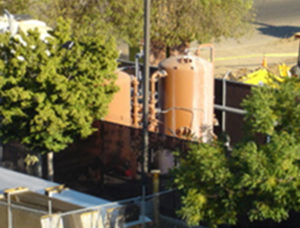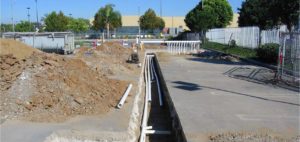In-Situ remediation refers to the cleanup of contamination in-place without the costly removal/ex-situ treatment of the soil and/or groundwater. In-situ remediation is often a logical choice for remediating a site due to the inherent cost savings; however, in some cases in-situ remediation is ineffective.
So why do some in-situ remediation projects fail? Basically, it’s failing to do your homework prior to full-scale implementation. What works at one site, may not work at another and therefore this should not be thought of as an “off the shelf” technology. Understanding the existing soil or aquifer conditions and geology is critical to the successful execution of any in-situ project. For example, trying to apply an anaerobic treatment technology in an aerobic environment will not be effective.
Do you consider enhanced biological treatments or in-situ chemical oxidation (ISCO)? Will monitored natural attenuation (MNA) be acceptable to the lead agency? These questions can easily be answered by understanding what’s happening in your affected soil column or water-bearing zone. The initial steps in the evaluation of any in-situ remedial option are presented below:
- Develop a complete Site Conceptual Model (SCM) by understanding all aspects of the site subsurface including: release mechanism and source, evaluate concentration trends of your constituents of concern (COCs), presence of your COCs breakdown products, and plume stability as it relates to the physical properties of your water-bearing zone (groundwater velocity, groundwater flow direction, thickness of the targeted water-bearing zone, etc.). This initial research may give some valuable insight.
- Perform MNA and biological analysis of soil and groundwater samples collected from upgradient, plume, and downgradient wells. This will help you understand the following:
- Anaerobic vs. aerobic. If anaerobic, has the water-bearing zone progressed to sulfanogenesis (sulfate is used as an electron acceptor and sulfide is produced) or methanogenesis (oxygen, nitrate, and sulfate have been depleted in the treatment zone and methane is produced)?
- What types of microbes naturally exist in my affected water-bearing zone? How are they reacting to the presence of the COCs? Are they capable of remediating my COCs?
- What is my natural oxidant demand in my treatment zone? This will require knowing what your dosing should be for ISCO technologies.
- Do I have metals or other constituents that could inadvertently form potential negative byproducts (such as trivalent chromium converting to hexavalent chromium) by chemical or biological reactions initiated by an in-situ technology?
- Do I have the needed microbes for the constituent of concern to consider an enhanced biological approach?
- Spend the time to do adequate pilot studies in the laboratory as well as in the field. The resources required to do a thorough pilot study are minimal when compared to the cost of the full-scale program.
- Based on the results of your MNA and biological analysis, perform bench-scale tests of applicable technologies on samples from your proposed treatment zone.
- Perform field pilot studies. It’s not uncommon for technologies that produced promising results in a bench-scale test in a laboratory under controlled conditions, to under-perform in the field.
- In-situ remediation is a contact sport. Know your geology. Do continuous sampling through your treatment zone. Knowing where your sand, silt, and clay units are is critical when designing your injection spacing and intervals. Understand the contaminate profile in your water-bearing zone. Again, in-situ remediation is a contact sport…no contact – no treatment.
- Perform injections upgradient of existing or newly installed monitoring wells to evaluate radius of influence and the effectiveness of the technology you are proposing. Be patient…monitor at least several months following your pilot study injections and don’t forget to do baseline sampling. Monitoring period will vary based on the geology, groundwater velocity, the treatment technology, and the constituents being treated.
Too many times, we see even the most skilled environmental professionals guessing on what might work at their site only to fail after spending a significant amount of the client’s money.
“For more information or if you require assistance on your in-situ remediation project, please contact us via our Contact Us page.”



